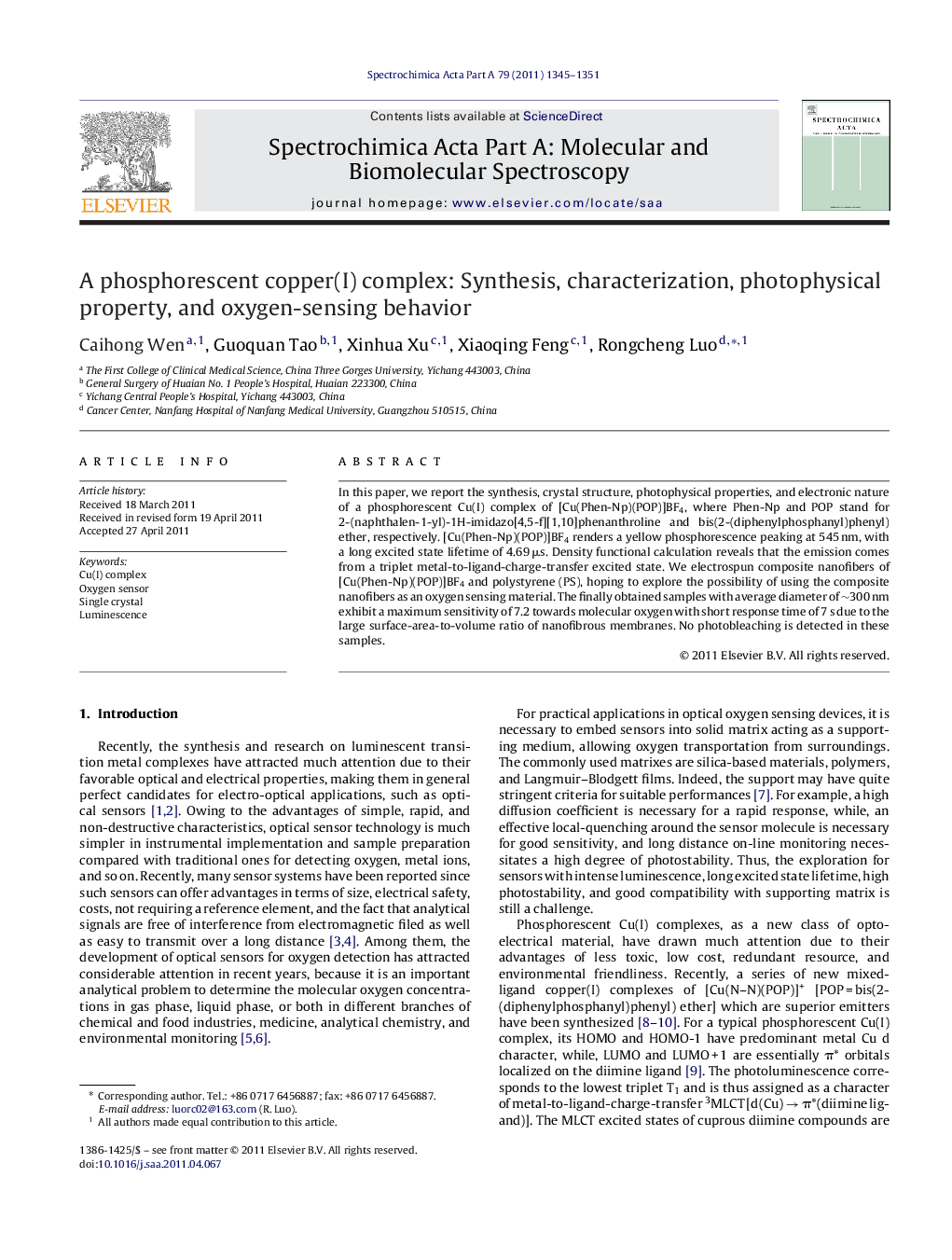| Article ID | Journal | Published Year | Pages | File Type |
|---|---|---|---|---|
| 1236530 | Spectrochimica Acta Part A: Molecular and Biomolecular Spectroscopy | 2011 | 7 Pages |
In this paper, we report the synthesis, crystal structure, photophysical properties, and electronic nature of a phosphorescent Cu(I) complex of [Cu(Phen-Np)(POP)]BF4, where Phen-Np and POP stand for 2-(naphthalen-1-yl)-1H-imidazo[4,5-f][1,10]phenanthroline and bis(2-(diphenylphosphanyl)phenyl) ether, respectively. [Cu(Phen-Np)(POP)]BF4 renders a yellow phosphorescence peaking at 545 nm, with a long excited state lifetime of 4.69 μs. Density functional calculation reveals that the emission comes from a triplet metal-to-ligand-charge-transfer excited state. We electrospun composite nanofibers of [Cu(Phen-Np)(POP)]BF4 and polystyrene (PS), hoping to explore the possibility of using the composite nanofibers as an oxygen sensing material. The finally obtained samples with average diameter of ∼300 nm exhibit a maximum sensitivity of 7.2 towards molecular oxygen with short response time of 7 s due to the large surface-area-to-volume ratio of nanofibrous membranes. No photobleaching is detected in these samples.
Graphical abstractA phosphorescent Cu(I) complex is doped into a polymer matrix, and its elementary application for oxygen-sensing application is also investigated. Experimental data suggest that the nanofibrous membranes exhibit a highest sensitivity of 7.2 towards oxygen with a good linear relationship.Figure optionsDownload full-size imageDownload as PowerPoint slideHighlights► A phosphorescent Cu(I) complex is synthesized and studied. ► It is a yellow emitter with long excited state lifetime of 4.69 μs. ► It is doped into a polymer matrix to investigate its sensing behavior to O2. ► A maximum sensitivity of 7.2 with response time of 7 s is realized.
